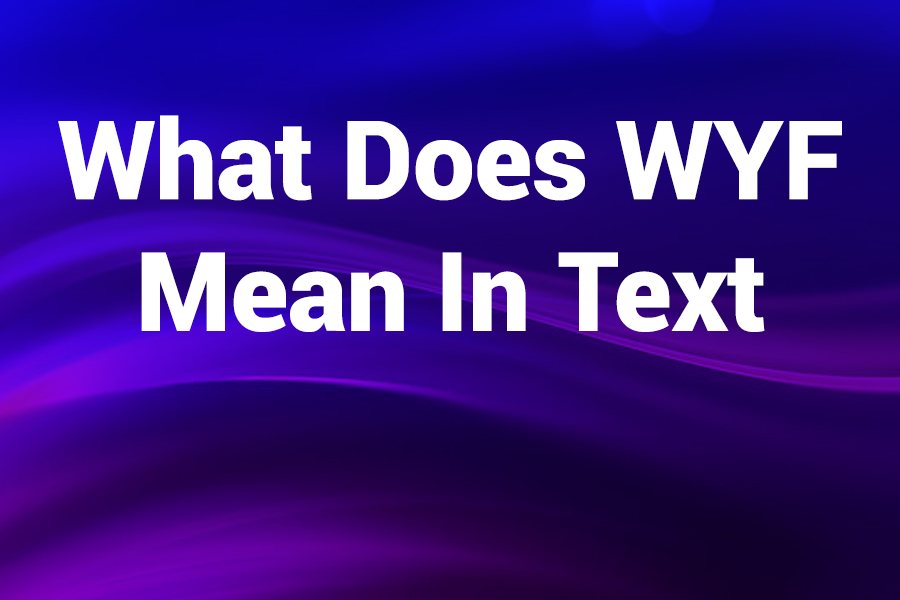You’ve probably seen WYF pop up in texts, social media DMs, or comment sections—and wondered what it really means. In today’s fast-moving digital chats, acronyms proliferate. WYF is one of those versatile ones that can mean more than one thing depending on context.
In this article, you’ll learn the primary definitions of WYF, how to interpret it based on usage, tips for using it yourself without confusion, and recent stats and trends around texting slang. Let’s dive in.
Understanding the Most Common Meaning of WYF
The most frequent use of WYF in texting or social media is as shorthand for “Where (are) You From?” It’s a casual, conversational way someone might ask your hometown, origin, or current location.
- Example: “Hey, WYF?”
- Reply: “I’m from Austin. You?”
Because it’s shorthand, WYF drops words like “are” or “you,” but the meaning is inferred. In casual chats—especially when meeting someone new—it often serves as an icebreaker.
But WYF isn’t limited to location queries. Depending on context, people also interpret it to mean things like “What’s Your Favorite?”, “What You Feeling?”, or even mood checks. The exact meaning depends on the flow of the conversation.
Other Possible Meanings & When They Arise
Because digital slang evolves, WYF has several backup meanings. Here are some of the most common ones:
- What’s Your Favorite?
Used when asking about preferences (food, music, movies).
Example: “WYF movie this year?” - What You Feeling?
More emotional or mood-oriented.
Example: “You seem quiet—WYF?” - What You Found?
Asking what someone discovered or located.
Example: “WYF new shop in town?” - Who’s Your Favorite?
Asking for people (artist, author, team).
Example: “WYF artist?” - Wish You Fortune
Less common—used to send well-wishes or luck.
Example: “Got your exam tomorrow—WYF!” - Why You Fighting? / What You Fighting?
In emotional or conflict-related chats.
Example: “Why are you angry—WYF?”
The trick is this: context is everything. If earlier in the chat you’re discussing music, “WYF” probably means “What’s Your Favorite [song/genre]?” If you’re just starting a conversation with someone new, “Where You From?” is the likeliest interpretation.
How to Decode WYF in Real Chat Scenarios
Here’s a quick guide to sizing up what someone intends:
- Look at the conversation topic
If you were chatting about movies or food just before, “WYF” likely refers to favorites, not location. - Check the tone and relationship
A first-time chat “Hey WYF?” leans toward location. Among friends: maybe feelings or preferences. - Ask for clarity
If you’re unsure, respond with: “Do you mean where I’m from or what I like?” Most people won’t mind clarifying. - Observe grammar & capitalization
Sometimes people type “WYF?” or “wyf color?” The extra word after WYF hints at which meaning they mean.
Examples of WYF in Context
- Online dating chat: “Hi there, WYF?” → asking where you’re from.
- Group chat about weekend plans: “WYF this Saturday?” → asking feelings or desires.
- Comment under a song post: “WYF artist?” → meaning “Who’s your favorite artist?”
- Mid-conversation mood check: “You’ve been quiet — WYF?” → asking how you feel.
Tips for Using WYF Smoothly (and Safely)
- Use WYF only when chatting casually—avoid it in work emails or formal messages.
- If your friend doesn’t know the acronym, you might want to expand it first (“WYF—where are you from?”).
- Don’t use WYF when ambiguity could cause miscommunication.
- Keep messages short and clear. Use follow-up questions.
- Avoid overusing slang; mixing with normal sentences helps maintain readability.
Trends, Stats & Why WYF Sticks Around
Slang and texting acronyms evolve rapidly. A few stats and observations:
- Over 92% of smartphone users say they use at least one texting abbreviation in daily conversation.
- Among Gen Z and younger Millennials, short-hand like WYF, WYD, WYA remain popular because they speed up typing and maintain a casual tone.
- Slang gets repurposed; acronyms often adopt multiple meanings. That’s why WYF can mean location, preference, or mood—depending on usage.
Because people are busier than ever, texting shorthand like WYF helps streamline chats without losing meaning. It’s part of the broader shift toward concise, expressive digital communication.
When WYF Use Might Backfire
- If you use WYF in formal or professional settings, it can look unprofessional or lazy.
- When talking to someone not familiar with slang, WYF may confuse them.
- In multi-topic chats, ambiguous WYF can derail conversation or provoke misunderstandings.
How to Respond When Someone Texts “WYF”
Use these options depending on what you suspect they meant:
| If WYF = “Where You From?” | Response idea |
| “I’m from Denver. You?” | Keep it conversational by asking theirs. |
| If WYF = “What’s Your Favorite?” | Response idea |
| “My favorite movie is Inception. Yours?” | Simple and engaging. |
| If WYF = “What You Feeling?” | Response idea |
| “Just tired from work. How about you?” | Honest, friendly. |
Ending Thoughts
WYF is a compact, flexible acronym born from the digital age. It often means “Where (are) You From?” but can shift meaning based on conversation—standing in for “What’s Your Favorite?” or even “What You Feeling?” More than just abbreviation, WYF reflects how language adapts in fast, informal chat settings.
To use WYF well, pay attention: know your audience, read the context, clarify when necessary, and keep replies clear. This helps you join the conversation without confusion.
Now that you know what WYF means (and what it can mean), you’re better equipped to decode or use it yourself in text messages and online chats.

